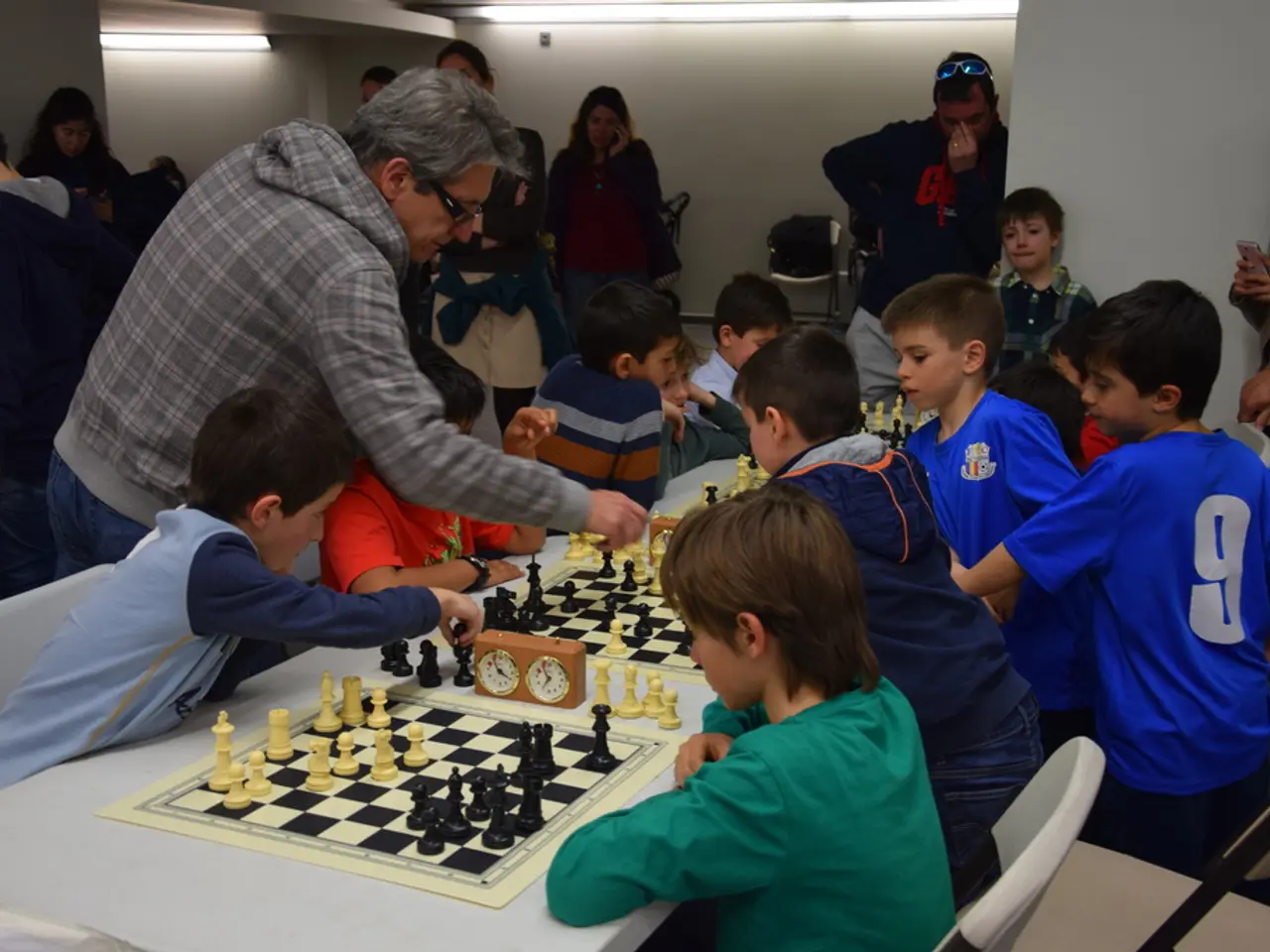Mastering the Antique Chinese Strategy Game: "Go"
In the world of strategy games, two ancient board games stand out - Go and Chess. Although both require strategic thinking, they each offer unique gameplay, strategies, and complexities.
**Gameplay**
Go, played on a grid, typically 19x19, involves black and white stones placed alternately. The objective is to control the largest territory by surrounding empty points and capturing opponents' stones [1]. On the other hand, Chess is played on an 8x8 board with pieces that move differently. The goal is to checkmate the opponent's king [2].
**Strategy**
Go is more about broad strategic decisions and territory management. Players need to think about influence, shape, and flow on the board, requiring a deep understanding of spatial relationships and long-term planning [1]. In contrast, Chess strategies revolve around controlling key squares, improving piece activity, and creating positional advantages. It involves a mix of tactical and strategic play, with an emphasis on attacking or defending specific points on the board [2].
**Complexity**
While Go's rules are straightforward, the game is often considered more complex due to its vast number of possible moves and the need for a deep understanding of board dynamics [1]. Chess, with more complex rules and various piece movements, requires a deep understanding of piece development, pawn structure, and endgame techniques [2].
**Learning and Practice**
For beginners, exploring beginner-friendly websites such as online-go.com or Gomoku apps with tutorials and AI opponents can be beneficial. Engaging with local Go clubs or online platforms for game reviews, discussions, and incentives to improve is also recommended [3].
Starting on smaller boards (9x9 or 13x13) can help simplify positional concepts and develop key tactics, including recognizing life-and-death situations faster [4]. Regular practice and analysis of games can help identify mistakes and better moves, as advanced players often study professional games for insight [5].
**Key Differences in a Nutshell**
| **Feature** | **Go** | **Chess** | |-------------|--------|-----------| | **Gameplay** | Control territory on a grid | Checkmate opponent's king on a board | | **Strategy** | Broad strategic planning; territory management | Tactical and strategic planning; controlling key squares | | **Complexity** | Simple rules but complex strategy | Complex rules with deep strategic and tactical elements |
In conclusion, while both games require strategic thinking, Go is more open-ended and territory-focused, whereas Chess is structured around specific pieces and checkmate objectives. Learning Go opens doors to a rich world of culture, community, and deep mental engagement. Mastering its strategy requires patience and continual learning, but the vast game complexity offers endless opportunities to explore creativity and depth.
[1] Solve tsumego (life and death) problems to train reading ability and tactical insight. [2] Chess's goal is to checkmate the opponent's king, a more direct and singular victory condition. [3] Engage with local Go clubs or online platforms for game reviews, discussions, and incentive to improve. [4] Beginners benefit from starting on smaller boards (9x9 or 13x13) to simplify positional concepts. [5] Transitioning to the standard 19x19 board becomes smoother with practice on smaller boards. [6] Go encourages a more fluid, expansive mindset compared to chess, teaching balance, patience, and adaptability through controlling territory. [7] Go's rules are straightforward, with players placing black or white stones on a 19x19 grid aiming to control the largest territory. [8] Go is an ancient board game originating from China over 4,000 years ago. [9] The Go handicap system allows players of different skill levels to challenge each other meaningfully. [10] Analyze your games to identify mistakes and better moves, as advanced players often study professional games for insight. [11] The vast game complexity offers endless opportunities to explore creativity and depth. [12] Regular practice on smaller boards (9x9 or 13x13) can help develop key tactics and recognize life-and-death situations faster. [13] Go games typically last longer, with around 200 moves, compared to about 80 moves in chess. [14] The Go board has 361 points at the start, vastly larger than chess's 64 squares.
In the realm of hobbies, strategy games such as Go and Chess, and perhaps home-and-garden activities, can provide individuals with a unique sense of accomplishment and engagement. Mastering Go requires not only spatial awareness and long-term planning but also a profound understanding of lifestyle choices, such as dedicating time for practice, seeking out resources, and engaging with the Go community [3, 11].




